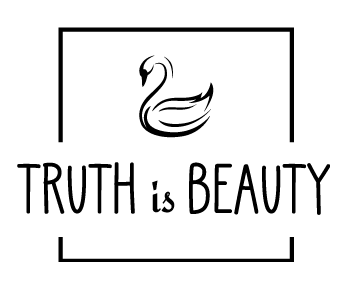Why is the effect of color on the skin the most important factor in determining season? What about the hair and eyes?
That this is true - that it's color's effect on skin, not hair or eyes, that matters - I learned from the writings of Kathryn Kalisz, and from my personal observations. Colors that seem to "go with" your hair aren't doing you any good if that hair is framing dirty-looking or shadowed skin. Colors that seem to make your eyes pop aren't helping if those eyes are popping out of a washed-out face.
Why is the skin appearance of prime importance? I think it's because, when viewing others, we use skin appearance - not hair or eye appearance - as our primary way of evaluating health. Health means life. Life means beauty.
Think about all the ways we use the language of color to describe the appearance of ill health in the skin. We speak of the yellow of jaundiced skin; the green of nauseated skin; the blue of frozen or oxygen-deprived skin; the purple of bruised skin; the red of burned or abraded skin; the pallor of bloodless skin; the grey of dead skin. The fact that there are so many ways that skin can look wrongly colored shows the prime importance of skin color to our estimations of others' health - and, therefore, of their beauty.
When you look at other people, you instantly and unconsciously evaluate their health, and you do it in large part using the appearance of their skin. If the skin looks right, the rest seems right too.
Why is the skin appearance of prime importance? I think it's because, when viewing others, we use skin appearance - not hair or eye appearance - as our primary way of evaluating health. Health means life. Life means beauty.
Think about all the ways we use the language of color to describe the appearance of ill health in the skin. We speak of the yellow of jaundiced skin; the green of nauseated skin; the blue of frozen or oxygen-deprived skin; the purple of bruised skin; the red of burned or abraded skin; the pallor of bloodless skin; the grey of dead skin. The fact that there are so many ways that skin can look wrongly colored shows the prime importance of skin color to our estimations of others' health - and, therefore, of their beauty.
When you look at other people, you instantly and unconsciously evaluate their health, and you do it in large part using the appearance of their skin. If the skin looks right, the rest seems right too.
Deep Winter, Dark Winter; True Spring, Warm Spring; what's up with the nomenclature?
Color Me Beautiful was the main player in color analysis for a long time. CMB had Deep Autumns and Winters, Clear Winters and Springs, Warm Springs and Autumns, and Cool Summers and Winters.
Kathryn Kalisz, founder of Sci/Art, replaced Warm and Cool with True, Deep with Dark, and Clear with Bright.
Other systems pre- and post- CMB and Sci/Art have had their own naming systems.
I usually use Kalisz's nomenclature to reflect the fact that I subscribe to Sci/Art's theories of color analysis. But sometimes I find myself using the CMB terminology.
As a person who owns palettes from many systems, I can say that those that use 12 seasons or categories all share a rough agreement about the colors of each season's palette. CMB's Warm Autumn palette looks a lot like TAIC's Warm Autumn palette and Sci/Art's True Autumn palette.
Kerry Stitch at Indigo Tones has a nice list of different names for the seasons here.
Kathryn Kalisz, founder of Sci/Art, replaced Warm and Cool with True, Deep with Dark, and Clear with Bright.
Other systems pre- and post- CMB and Sci/Art have had their own naming systems.
I usually use Kalisz's nomenclature to reflect the fact that I subscribe to Sci/Art's theories of color analysis. But sometimes I find myself using the CMB terminology.
As a person who owns palettes from many systems, I can say that those that use 12 seasons or categories all share a rough agreement about the colors of each season's palette. CMB's Warm Autumn palette looks a lot like TAIC's Warm Autumn palette and Sci/Art's True Autumn palette.
Kerry Stitch at Indigo Tones has a nice list of different names for the seasons here.
Where can I buy a palette of my seasonal colors?
You can order those here.
Does my season change when I tan in summer or grow paler in winter?
No. Your palete is still the same. However, every palette contains a range of lighter and darker colors, and you may find that colors at one end or the other of the light-dark scale feel more comfortable as your skin gets lighter or darker.
So, for example, a very tan Soft Summer doesn't become a Winter. But when she's very tan, she might prefer her deepest dusty rose top to the light dusty rose top that she loves when her skin is lighter.
So, for example, a very tan Soft Summer doesn't become a Winter. But when she's very tan, she might prefer her deepest dusty rose top to the light dusty rose top that she loves when her skin is lighter.
